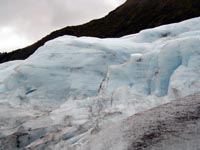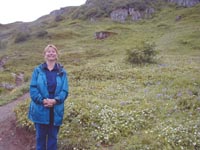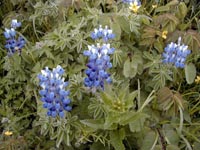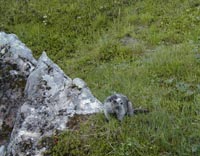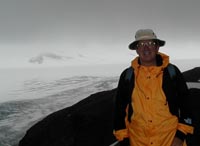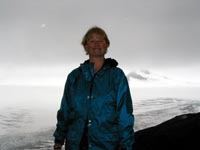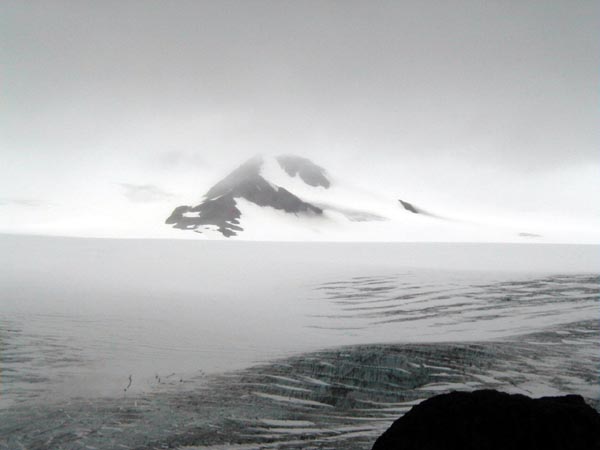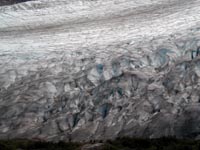 Note:
All pictures in this section are linked to bigger versions. Click
on the picture to get to the larger version. Use your browser's "back"
button to return to this page.
Note:
All pictures in this section are linked to bigger versions. Click
on the picture to get to the larger version. Use your browser's "back"
button to return to this page.
A short drive north of Seward, Alaska is a road which leads to the terminus of Exit Glacier. A short walk from the parking lot puts one near the 150-foot-high face of the glacier. This is the glacier. Note that in the very bottom of the picture are three people who lend a sense of scale to the size of this glacier. Glaciers are formed when snow is compacted into ice by the pressure of increasing amounts of snowfall, which compresses the snow into ice. When the ice gets sufficiently deep, the pressure squeezes the oxygen out of the ice, giving it the characteristic blue color of glacier ice.
Exit glacier is one of more than 30 named glaciers which flow down from the Harding icefield. The icefield, the fourth largest in North America, is approximately 35 miles by 20 miles, i.e., 700 square miles of ice hundreds of feet thick. It's not the biggest icefield in Alaska, though. The Chugach Icefield is 8,300 square miles, the size of the state of New Hampshire.
Lisa and I departed a bit after nine one morning to climb the trail up to the Harding Icefield.
